
Possum removal should only be considered if you are hearing noises in the roof at night or nasty smells are coming from the ceiling but these signs could also be the work of rats! Keep reading for proven strategies for successful possum removal and tips on identifying if it is possums or rats.
You have two fantastic options right now:
Call or text, and we'll send one of our expert technicians to handle everything you didn’t know you needed! Save yourself the headache of spotting the entry points and worrying about the legalities of handling a protected animal. We’ve got you covered!
or
Feeling adventurous? Take a look at the guide to Possum Removal below and have a go at self-diagnosing the possum situation. Don't worry, we'll still be here to assist if you get stuck!

Table Of Contents:
- Possum Removal.
- How to Identify Common Australian Possums.
- Catch and Release Licences: How to Remove Possums Legally
- Investigating Different Possum Removal Methods.
- Possum Removalists - How to Choose the Right Expert
- Possum Trap: Essential Do's and Don'ts for Success.
- What to Expect After the Possum Removal.
- Find Possum Removal Service Providers Near You
- The Pros and Cons of DIY Possum Removal
- Cleaning Up After an Infestation
- Professional Tips and Advice to Prevent Possums Returning
- Advantages Possum Box Installation
- What Are the Benefits of Installing Gutter Guard and Valley Guard?
- Why Choose Tree Guard
- Possum Deterrents vs Repellents: What’s Effective?
- Dead Possum Dilemma: Removal and Prevention.
-
Possum Removal Frequently Asked Questions
- Are possums protected in Australia?
- Do pest control companies remove possums?
- Can I or a possum specialist relocate a possum from my balcony or garden?
- What time do possums come out at night in Australia?
- How do I know if I have a trapped possum?
- Do possum traps work?
- How much does a professional possum removal cost?
- Conclusion
Possum Removal
Possum removal is essential for property owners facing issues with these nocturnal creatures, causing damage to buildings and roofs also disturbing sleep with their loud noises and foul odour emissions.
Before you start researching options, it is important to understand the limitations of Possum removal. Possums are protected in Australia, making relocation beyond 25-150m illegal.
If possums are inside the roof, walls, or midfloor, you can take action. However, if possums are on the roof, balcony, or in the garden, you have limited legal options to resolve your concerns, if any.
There are several possibilities for the noises you're hearing. If it's rats or possums in the roof, there are simple ways to narrow down the cause.
Start by establishing when and what types of sounds you are hearing. Keeping track of the times can provide significant clues to identify the noises in the roof at night.
Possum Piper brings 15 years of experience in providing reliable solutions for Possum and Rat problems.
Below, we provide an easy-to-follow process for possum control with impartial advice, helping you make informed choices based on your situation.
Points of discussion include:
- Identification of Possum infestation.
- Common types of Australian Possum; a visual guide.
- Clarifying legal requirements when addressing possum issues.
- Removal of possums; Exploring available solutions and assessing their effectiveness. Comparing the advantages of possum-proofing your property versus possum traps, assessing the advantages and disadvantages of each approach based on circumstances.
- Providing guidance on what to look for when selecting a licensed professional possum removal service.
- Highlighting other key factors to consider when making decisions.
Don't Ignore These Signs: How do I know if I have a Possum in the Roof?
- Nocturnal Noises: Possums are active at night, creating loud scratching, thumping, or scampering sounds in attics, ceilings, or roof spaces. These sounds usually occur when they leave to feed between dusk and 11 p.m. and again when they return to sleep somewhere between 3 a.m. and dawn. Consistent noises at the same time every day signal a possum issue. Noises from 11 p.m. to 3 a.m. may suggest rodents, as they lack a fixed schedule. Rodents can be heard tapping, scurrying, and squeaking during the day, but they are most active at night.
- Droppings: Possum droppings are often cylindrical and may be found in roof cavities, in the garden or along their regular pathways along fences and powerlines.
- Chewed or Damaged Entry Points: Possums gnaw on materials like wood, causing visible damage and leaving debris on the ground from them entering buildings or roof spaces.
- Nests and Nesting Materials: Possums construct nests (dreys) using leaves, grass, and other soft materials, which can be found in roof voids, under houses or alcoves in the roofline.
- Foul Odour: Possum urine has a strong smell, which may be noticeable in areas frequented by possums.
- Visual Sightings: Spotting possums climbing trees, running along fences, or on roofs can indicate their presence.
Note: If no other signs are present, it is possible that possums are simply using your property as a thoroughfare.
Possum Removal and Identifying the Common Entry Points
Another important step in the detection of Possums is to understand where they typically enter buildings. A professional will possess the expertise to identify signs that may be challenging for an untrained eye.
Some common entry points include but are not limited to:
- Broken or loose tiles and roofing materials. Gaps between roofing tiles in the gutter line and roof valleys.
- Holes in the eaves. Broken or missing soffit panels.
- Vents without proper screening.
- Gaps around pipes and cables entering the building.
- Uncapped chimneys
- Open areas beneath buildings.
- Crevices and cracks in walls and foundations.

Possum Removal by Identify Common Australian Possums
Not to be mistaken for an opossum found in North, Central, and South America. There are two common possums prevalent in suburban Australia, Common Brushtail Possums and common ringtail possum; if you have a Possum issue you might see them in your garden at night.
Common Brushtail Possum.
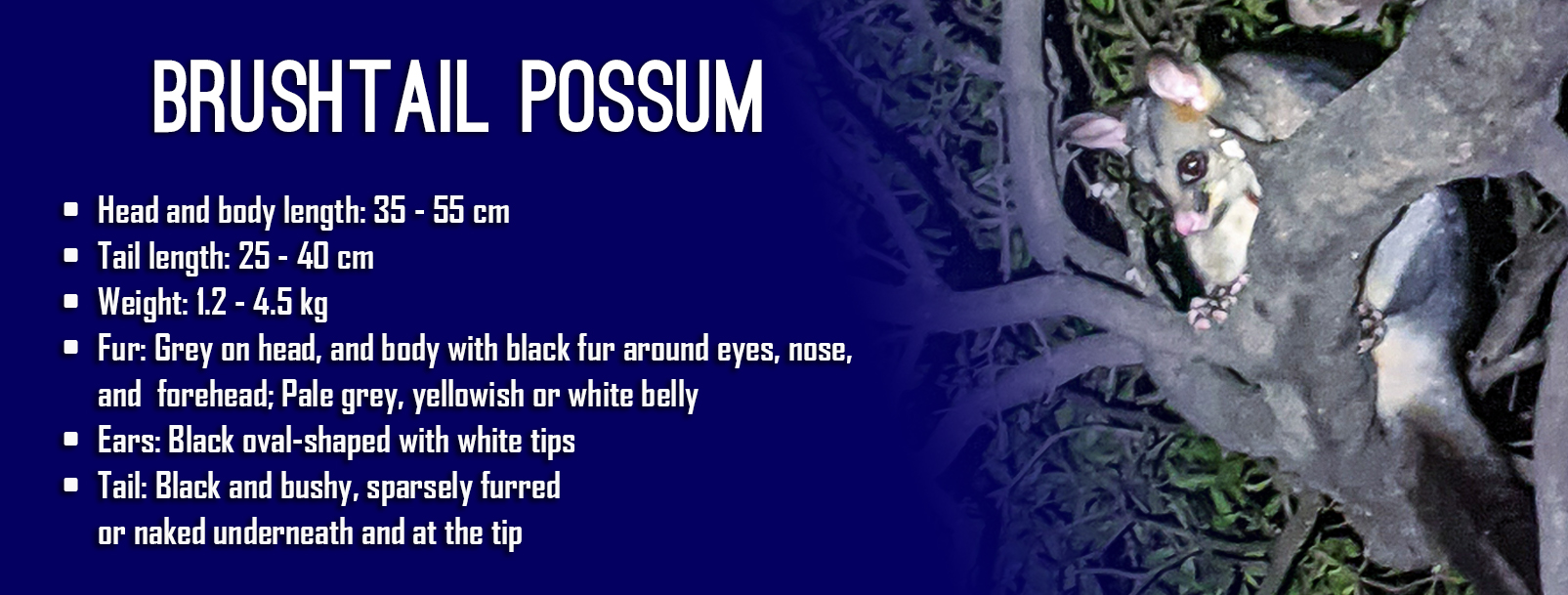
Ringtail Possum.

Related
- Possum Noises: A Guide to Species Identification
- What Do Possums Eat and Possum Poop: Identifying Factors
Possum Removal Catch and Release Licence Legalities
Possums are a protected species in Australia under National Parks and Wildlife Act 1972. According to the law, it is illegal to kill, harm, or relocate possums beyond 25-150 meters from the capture location, varying distance based on the jurisdiction of each state.
To trap a possum in Australia, a Possum Catch & Release License is required by law. The various state government bodies throughout Australia issue these licenses.
Click on the state you live in for more information about the law regarding what you are legally allowed to do in regard to possums: NSW, VIC, SA, QLD, WA, TAS, ACT, and the NT.
If you or the removal company you hire are found to have moved a possum beyond this limit, you could be fined up to $50,000. This law applies regardless of your situation or reason for relocating the possum.
To ensure the ethical treatment of wildlife during the removal process, professional service providers need to be licensed by the governing body in your state.
This guarantees compliance with safe practices and local laws, including relocation distance requirements.
Before proceeding with any work on your property, always verify that your chosen provider possesses valid licenses.
Possum Piper is equipped with up-to-date licenses available upon request and extensive experience in ethically removing possums. We are an excellent choice to advise on how to remove a possum from your house or business.
Related
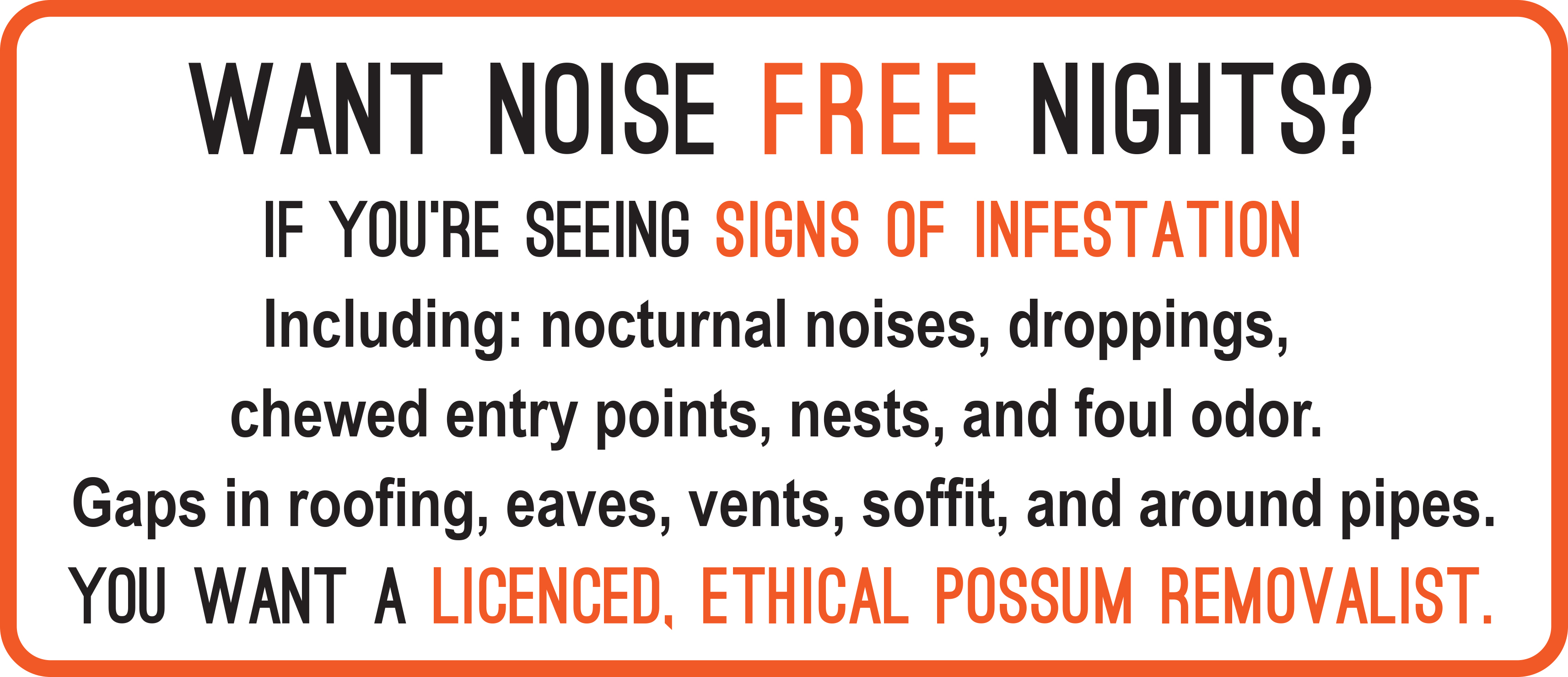
Possum Removal Methods
We’ve confirmed it's a possum in the roof and can be resolved since it's inside your home or business. Let's delve deeper into possum removal. We'll investigate the available options and explore them in more detail.
Possum removal refers to the safe and humane extraction of possums from areas causing problems.
Possum removalists employ a systematic process that involves:
- Identifying entry points,
- Creating safe exit strategies,
- Relocating possums in compliance with local regulations,
- Implementing prevention measures to avoid future infestations.
As an expert possum removal company in Sydney, Possum Piper uses best practices for humanely removing possums. We have gained a reputation for providing a comprehensive service that sets the standard for others in the industry.
Dealing with possum problems can be complex, requiring tailored solutions that address the unique needs of each client's situation. At a minimum, you should receive an extensive assessment with proper reporting.
It is essential that it outlines how possums are entering the roof or building, presents clear resolutions, and a strategy to ensure the possum is not harmed before being lawfully released.
People often link all noises in their homes or businesses to possums. Often, it involves both rodents and possums.
For this reason, we recommend rodent control solutions also be included as part of the overall method for resolving possum issues
Possum Removal and Choosing the Right Expert
For effective and legal possum removal, it's important to hire experts with comprehensive experience and qualifications.
Possum removalists with building &/or building inspection qualifications are preferred and can provide the necessary expertise to assess situations.
Possum Piper, which has been operating in Sydney since 2011, is the only possum removal company in Australia with such expertise.
Be cautious of misleading claims by some companies offering miraculous sprays or solutions for your roof or house or only offering a possum trap without possum proofing.
It's important to trust only reputable possum removal specialists. A reliable possum removal professional will focus on long-term solutions, ensuring the safety and well-being of both you and the possums.
Make informed decisions through research and choose a reliable service provider who will alleviate personal discomfort and protect your property from further damage.
To kickstart your search for a reliable possum removalist, a good starting point is to consider those who possess Google ratings. An even better approach would be to give preference to those who have garnered numerous reviews and boast a high rating score, as this is a strong indicator of their professionalism and reliability.
If you cannot find a Google Business presence for a potential service provider, it's essential to question what they might be concealing. Similarly, if you come across low ratings or scores, it's worth inquiring about the reasons behind these numbers.
Possum removalists will carry out the following steps in their process:
Comprehensive Inspection and Report Generation: Why is it Necessary?
To begin the possum removal process, a thorough inspection is essential.
This should include checking on the roof and around the perimeter for any signs of entry points, which are typically between the size of a golf ball and a tennis ball—also includes checking inside the ceiling cavity for any signs of rodent activity.
Based on this inspection, a detailed report with relevant images is provided, clearly indicating the identified entry points, excluded areas that are out of scope, and any other potential concerns.
Following on to outline a suitable strategy to address the issue and up-front costs. This transparency ensures clarity and openness throughout the process, allowing effective collaboration between the possum removal specialist and the property owner.
Possum Removal: Identifying & Possum Proofing Entry Points for a Successful Possum Removal
After the report has been issued and the work to be carried out is agreed on, the next step is to possum-proof the building to ensure that the possums or any new possums cannot gain access in the future.
A possum removalist employs various methods of sealing entry points with high-quality quality, durable, and purpose-fit materials. Including metal flashing or fine mesh that prevents animals from fitting their jaws through, allowing them to weaken the mesh. This avoids re-infestations through the damaged mesh.
Possums are highly territorial and will persistently try to access what they consider their home. It's crucial to use materials that prevent them from re-entering.
It can also be necessary to install a metal gutter guard or valley guard if the entry points are in either gutter lines or roof valley areas. Making the entire length susceptible to breaches.
A possum will move along systematically, finding weak points; if it is not addressed in its entirety, you may find it an everlasting issue as you block each entry point individually.

Exploring Strategies for Relocating Possums Responsibly.
The final step is to ensure the Possums are safely evicted now that the roof or area in concern has been sealed otherwise they will be trapped and unable to exit without assistance.
Possum Removal by Installing a One-way Possum door
The preferred method of ensuring the possum can exit safely is to install a temporary one-way door system over the main entry point, allowing the possum to pass through without difficulty most of the time.
The advantage of the possum one-way door is that it avoids needing the technician to attend after dark and reduces stress for the possum through meeting a human in close proximity. The one-way door can also overcome situations where no manhole is present or the issue is in a flat roof again where no ceiling access is possible.
Related
Possum Removal Using Traps: Essential Do's and Don'ts
In certain instances, a trap is the best option if a one-way door can’t be installed or the customer chooses not to have the one-way possum door. Traps, however, come with complications surrounding how they are managed legally.
In compliance with both state and federal laws, any possum that is captured using a possum trap must be relocated within a range of 25 to 150 meters from its original location on your property. The specific distance varies depending on the laws of each state.
Possums must also be released before sunrise or after dark, within the legal distance from the capture point and into the foliage. The release should occur within 24 hours of capture. Technicians must possess a valid commercial possum-catching license.
Failing to comply and ignoring the established legal regulations could lead to fines of up to $50,000.
As there are regulations and risks of neglect and stress to the animal using a trap, it is more ethical to use the door system for the final stage of possum removal.

Related
Possum Removal: Considerations for the Now and the Long Term
Good possum removal companies will provide ongoing support and detailed advice on what to expect for the days post-removal. This will include a summary of possum noises you may hear due to the possum discovering how to use the one-way door.
Also, recommendations for the prevention of future infestations. Measures may involve property upkeep, Gutter and/ or Valley Guard installation, and sustained rodent control for a noise-free home or business.
Beware of companies that don’t provide support during the removal process. Possum Piper takes pride in offering ongoing assistance until a resolution has been achieved, ensuring any possum problems are addressed promptly and effectively.
Especially in the unusual event that a Possum is trapped or can’t understand how to use the one-way door for a prolonged time (More than four consecutive nights).
Possum Removal Service Providers Near You
Regarding possum removal services, Sydney, Blue Mountains, and The Central Coast Possum Piper will be your go-to possum removal specialist.
For those residing in other areas of Australia, we suggest using Possum Gone for the NSW South Coast, Mr Possum for Brisbane, Pestaid for SA, and Possum Catchers for Melbourne.
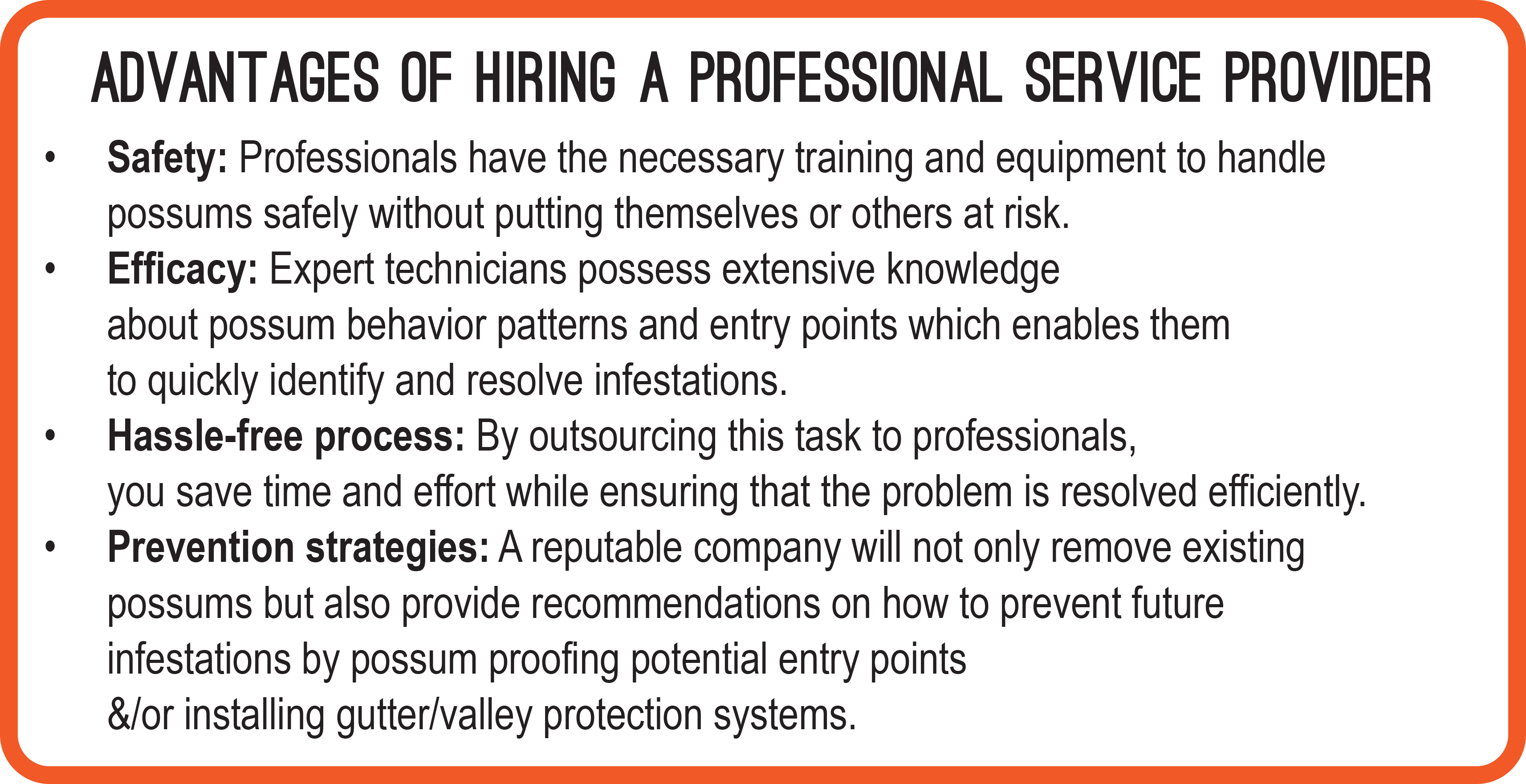
Possum Removal DIY Pros and Cons
If you would like to attempt to do your own Possum removal before attempting DIY possum removal, ensure your safety, especially if the work involves getting on the roof, as is often the case.
If you are not confident a reputable possum removal company can assist, they possess working-at-heights accreditation and proper insurance, providing expert handling.
You should inspect the exterior of your home to look for any gaps, cracks, or openings that could potentially serve as entry points for possums.
These entry points may include roof vents, eaves, open under-house areas, gaps in the gutter line and roof valleys.
It can be challenging to identify their access locations. This crucial step can be hard for the untrained eye.
Even if you have evidence the possum is using one entry, you will still need to thoroughly inspect the roof for other potential weak points where possums can enter,
They will undoubtedly search for new ways to get back in. If all possibilities haven't been investigated, the possum problem may return sooner than expected.
You could also engage with a roofing company for the roof work, but they do not have the expertise to identify the entry points.
It is common for roofers to trap possums accidentally if the possum enters through damaged roof areas.
If you hear loud noises in your roof at night, including between 11 pm and 3 am, resembling frantic running from one end of your ceiling to the other, it clearly indicates that a possum is trapped inside your home or building.
Call Possum Piper immediately to avoid a dead possum in your roof or if you have an animal trapped inside.
If you would like to go through the process of applying for a Landholder's licence to harm native animals, we have some tips for how to set the trap, which can be rented from Kennards Hire.
Only use a trap if you have sealed the roof and the possum is now trapped in the roof; otherwise, it will exit via its usual route and bypass the trap.
- Use a hard piece of fruit like an apple, ensuring it can’t fall out of place.
- Tie or secure the fruit to the very back of the cage.
- Check it frequently or listen near the manhole for sounds of distress and rattling the cage.
- Make sure you release it near a tree on your property during dark/nighttime.
- If it takes more than one night, don’t keep using the old fruit.
Cleaning Up After an Infestation
Once you've successfully removed the possums from your property, cleaning up any mess left behind is optional. It is recommended to contact a licensed roof sanitisation provider if this is something you require.
Possum Removal Professional Tips and Advice to Prevent Possums Returning
After the possum removal process is completed, it is advisable to prevent future infestations. Measures recommended by a Possum removalist to keep your home or business free from possums and rodents may include:
- Maintaining the exterior of your property,
- Placing a Possum Box,
- Installing gutter or valley protection systems,
- Tree Guards,
- Implementing rodent control techniques
Possum Removal Advantages For Possum Box Installation
Possum boxes can assist in keeping possums from seeking shelter in your home or building.
Possum boxes provide a safe alternative for our native possums, mimicking their natural habitat of tree hollows, which are becoming increasingly scarce due to land clearing and urbanization.
You can help protect these important members of our ecosystem with proactive measures such as installing a possum box or drey, which encourages possum relocation and avoids displacement.
Proper installation of the possum box is crucial for its success.
Place the possum box in a sheltered area while making current nesting sites unattractive by using quassia chips and increasing light sources near nests.
Entice the possums into their new home with food like apples, bananas, or corn cobs placed near the entrance hole.

Related
Possum Removal and the Benefits of Installing Gutter Guard and Valley Guard?
Installing roof gutter and valley guards can act as a barrier, preventing rodents and possums from entering your home through the roof and accessing your ceiling space.
When these guards are installed correctly by professional installers, you can enjoy peace of mind knowing that your roof is not only possum and rodent-proof but also prevents leaves and debris from blocking up these drainage lines.
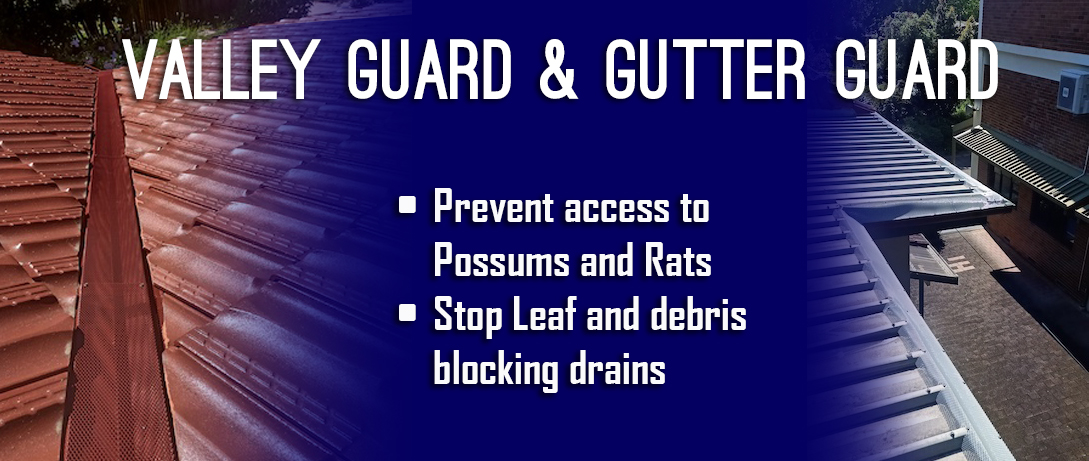
Related
Why Choose Tree Guard?
Possums pose a significant threat to trees through their over-grazing, causing damage and drastically shortening the trees' lifespan. In some cases, these creatures can even cause complete defoliation within a single season.
Another problematic behaviour of possums is their ability to use branches as a bridge, enabling them to access your roof-space, causing damage and irritating noises. This calls for a robust solution to protect against possum damage.
Installing possum guards on your trees is an excellent solution to avoid such problems. We use high-grade, UV-resistant, and tough 1mm thick polycarbonate plastic sheeting, ensuring durability in all weather conditions.
This approach is ideal for Domestic, Industrial and Commercial properties and other areas housing At-risk or Significant Trees that require protection.
The guard serves an additional purpose by reducing predation of endangered bird nests by possums.
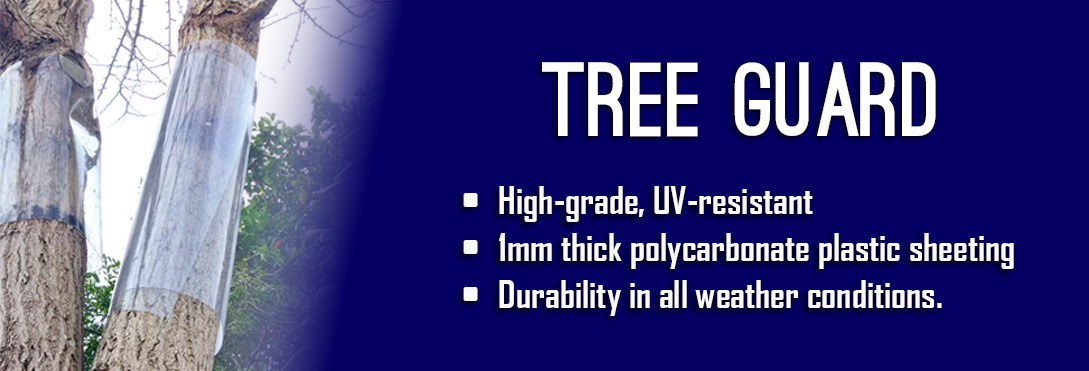
Related
Possum Removal: Deterrents vs Repellents vs Effectiveness
There are various possum deterrents and repellents available on the market that claim to keep possums from returning to your property after being removed.
These options include using essential oils such as eucalyptus oil mixed with water and spraying it around potential entry points or placing mothballs near their favourite nesting spots, as well as sonic sound devices or spotlights.
However, our anecdotal research has shown that none of these products have any effect on deterring possums from eating plants or preventing them from nesting in your roof.
Related
Possum Removal for Dead Possums
If the dead Possum is on public property, for instance, on the side of the road or median strip, you can call the local council to remove the carcass.
When it is on private property or in your roof cavity, if you don't want to handle the dead possum yourself, you will need to hire a company that specialises in dead animal removal services. Possum removal companies usually provide this service; they can also possum-proof your building to prevent another possum from dying in the roof.
These trained individuals possess the knowledge and experience to identify and locate dead possums and dispose of them appropriately.
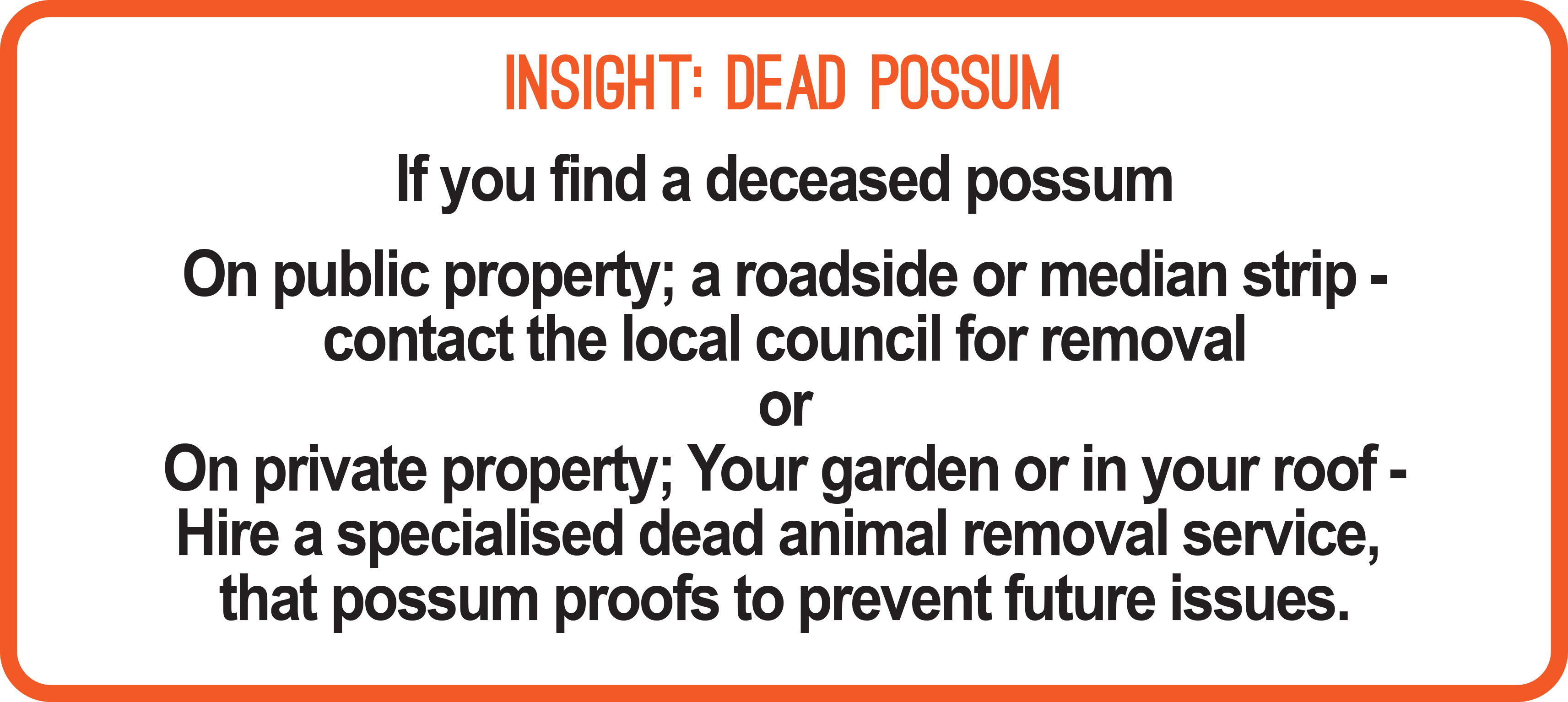
Related
Possum Removal Frequently Asked Questions
Are possums protected in Australia?
Yes, Possums are protected under the National Parks and Wildlife Conservation Act 1975.
Do pest control companies remove possums?
Most pest control companies don't have the expertise to possum-proof and resolve your issues; they will only trap a possum and release them back onto your property. Therefore, it is important you only use professional possum removal companies who not only remove the possum but will possum-proof your home or building.
Can I or a possum specialist relocate a possum from my balcony or garden?
Attempting to relocate possums can prove unproductive and is against the law.
Even within legal boundaries, relocated possums often return. Seeking coexistence with these creatures might be a practical approach when they're present on your property.
What time do possums come out at night in Australia?
Possums are nocturnal creatures and are actively foraging for food and water between 11:00 PM and 3:00 AM. They will usually leave the nest any time between sundown and 11:00 PM
How do I know if I have a trapped possum?
Possums are active at night, typically active between 11:00 PM and 3:00 AM when they are out foraging for food and water.
If you hear distressed noises in your roof during these hours, panicked footsteps from one side of your ceiling to the other, it's a distinct sign that a possum might be trapped in your roof.
Do possum traps work?
Possum traps are only part of the solution in resolving your possum issue if they are in your home/building. Trapping a possum and releasing it within the legal distance will not solve your problem unless you are also possum-proofing.
Most reputable professional possum removal specialists will possum proof and use one-way doors in preference to the use of a possum trap
How much does a professional possum removal cost?
The cost of professional possum removal can vary based on several factors:
- The extent of work needed to possum-proof the property.
- Service offerings may differ among companies, such as guarantees, entry point sealing limits, and post-removal reports. Choose a company that aligns with your service preferences.
- Your location can also affect the price of the possum removal service. If you're located in an outer fringe area, you may be charged more than in a serviceable area.
- To determine possum removal costs, it's wise to seek quotes from multiple providers and compare services. Inquire about potential unexpected expenses to avoid surprises during payment.
There are only a handful of professional Sydney possum removal services, with Possum Piper being the industry leader. They specialize in both resolving possum control but also rodent problems.
Conclusion
Possum removal services in conjunction with possum proofing offer the most effective and humane solutions to possum infestations. DIY attempts may seem feasible, but the complexities pose significant risks, especially with roof work.
Possum removal professional companies with accreditation, insurance, and extensive expertise prioritise safety for property owners and possums. Their methodical approach involves thorough inspection, safe extraction, and adherence to local regulations, supplemented by preventative measures.
Possum removal experts will navigate the legal intricacies surrounding possum removal, possessing the essential licenses for relocating possums within legal limits and ensuring ethical disposal of deceased possums. DIY efforts often falter in identifying crucial entry points, potentially leading to recurring infestations.
Post-removal professional services provide invaluable guidance, addressing noise concerns and offering preventive recommendations.
Possum removalists guarantee a comprehensive, secure, and ethical resolution to the infestation. Their expertise not only resolves the immediate issue but fortifies against future occurrences, instilling peace of mind in property owners.

More Rat articles you may like:
- Rat Identification: Signs of Rodent Activity
- How to Get Rid of Rats: Rodent Control Strategies that Work
- Rat Bait: Navigating Successful Pest Management
- Rat Traps: The Ultimate Guide to Bait Free Rodent Control








